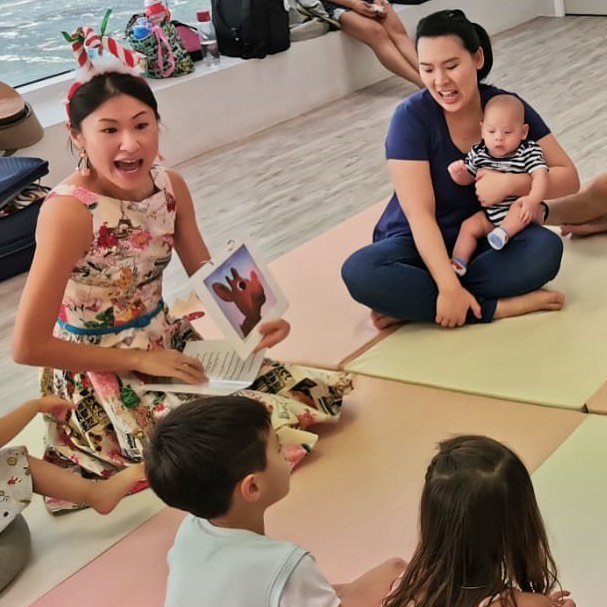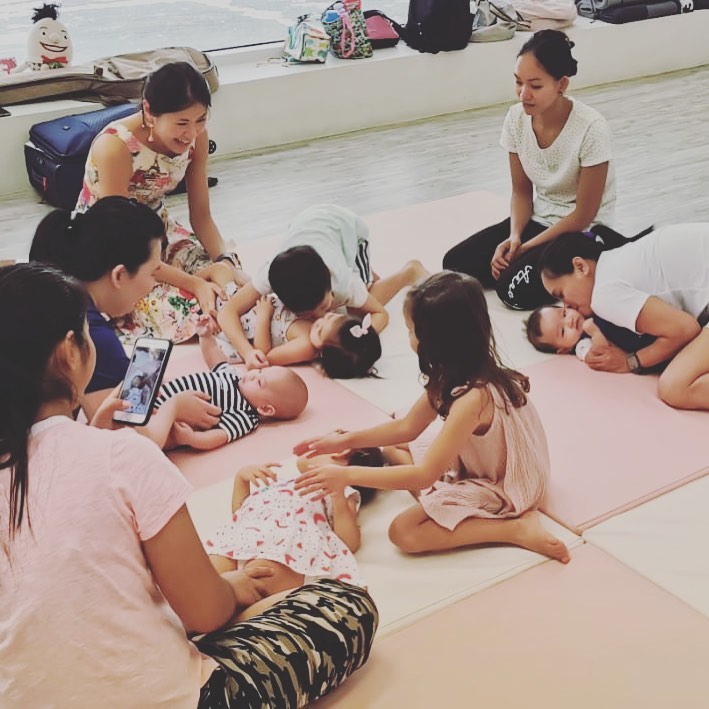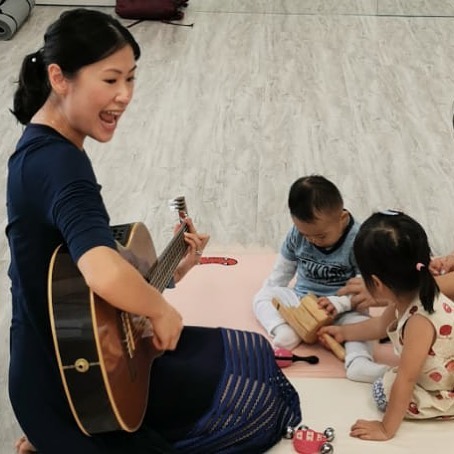How was this lesson plan template developed?
A bit of Background:
I was trained as a music therapist at the University of Queensland from 2006 to 2010.

In the last two years of my studies, I had to fulfill a total of 640 clinical placement hours within two years. I have observed many different supervisors running individual sessions and music therapy groups during my placement at various settings, including an adult disability facility, and three pediatric hospitals. As a music therapy student, I had to watch my supervisors and fellow classmates run their sessions, analyzed how the sessions were designed, intentionally taking down notes, reflected on them, made compliments of what were done well and made suggestions on what needed improvements. INTENTIONALLY. I learnt to facilitate the sessions using LIVE music and co-facilitate them with my partner.
I learnt to plan my sessions with the strengths and needs of my client, music therapy goals and objectives in mind, choosing my repertoire, my musical instruments, as well as paying attention to the environmental set-up of the space.
In an individual music therapy setting, a plan is a plan and 80% of the time, the plan didn't really work because ultimately music therapists are trained to follow the child's lead, be flexible, and move along with the client and the music within a therapeutic relationship.
In a music therapy group, I had to be A LOT MORE STRUCTURED in my planning. I learnt to write my sessions by matching the energy level of my clients. I have run music therapy groups individually for various populations, for example,
1. in-patient groups at pediatric hospitals for positive developmental play and reduction in anxiety pre and post surgery;
2. at-risk adolescents for self-expressions and social-emotional support.
I have also run joint sessions with other allied health professionals, such as with
1. social workers using Cognitive Behavioural Therapy in promoting pro-social behaviours at mental health facilities with children and youth;
2. speech therapists working on speech and social-communication goals;
3. physiotherapists and PE teachers on gross motor goals, as well as
4. psychologists on social-emotional goals
at pediatric hospitals, early intervention centers and special education schools in Australia, Hong Kong and Singapore.
When I was working full time as a music therapist, my caseload was over 100 students PER WEEK! Having that demand of caseloads, I had to come up with an efficient way when planning my sessions. Hence, my group sessions followed a bell curve energy model, which was first introduced to me by my supervisor, Ms Helen Perrington (Registered Music Therapist). I have coined the term bell curve energy model in recent years because that's the language I used to explain it to my colleagues, pre-service, and in-service preschool teachers undergoing early childhood training.
Early Childhood Music Programs
7 years ago, I started setting foot into Early Childhood Music when I welcomed my firstborn son. One subtopic that I needed to teach was "Writing a Music and Movement Lesson Plan". The standard template that I was required to teach followed three components: Tune In- Main Activity- Closure. With my trainings as a music therapist who believes deeply in sensory integrations, I couldn't bring myself to follow the suggested template. I was trained to run developmental music therapy groups with the elements of music embeded within the activities. In early childhood music, I was required to coach my students ways to teach the Elements of Music.
In the end, I have combined both and created this Lesson Plan template using the bell curve energy model, which works for both therapy and early childhood classroom settings.
Music and Movement- Lesson Plan Template- Bell Curve Energy Model

From my own experience, a 30 to 45 minutes music lesson/ music therapy groups ALWAYS consists of about 7 activities.
Rationale:
The idea of the bell curve model is that the lesson is planned according to the energy level of the students in mind. In the field of music therapy, we call it the Iso principle, a method of mood management in which the music therapist matches the clients' mood using music, and gradually changes the music to help the client shift to a mood that is optimal (Heiderscheit & Madson, 2015). It is often used as a calming strategy or for pain management.
In music education, it is called the Isomoodic Principle, in which Lohmeyer (2017) defined it as meeting the students at their emotional level (as manifested as energy level) and subsequently brings them slowly to a level appropriate for the activity.
Guidelines when writing a lesson plan
1. A lesson plan should be a flexible guideline.
2. "When you first begin teaching, the more detailed the lessons plans are, the easier the actual teaching will be".
3. "The number of activities you plan vary according to the ages of the children and time allows for movement."
(Pica, 2010)
When using the above lesson plan template, all you have to do is to
know the strengths and needs of the children/ clients you work with,
know the developmental needs of the children/ clients
fill up names of the songs that match the categories/ functions
know the objectives for the children when planning each activity and have them quickly written down underneath the song (SMART goals)
think about the musical instruments that you need to prepare
have a little thought on the environmental set up ( I always have my children in circled seating with marker spots on the floor).
you may want to incorporate a theme but it really isn't always necessary.
Where did I get my inspirations from?
I was a stay-at-home mother for 2 years, and that's when I brought my son to trial music and movement classes at various locations in Singapore. I observed A LOT of different music programs designed for infants. Unfortunately I did not come across any music classes that I liked to the extent that I would sign him up for regular lessons.
I spied with my little eyes, and I listened with my little ears
When my son was 8 months old, I followed my husband on a business trip to Brisbane, I brought my baby to my professor, Dr Vicky Abad's music program, Music Beat Kids, Australia (https://musicbeat.com.au, formerly known as Boppin Babies) for a total of 8 times within two weeks.

(Photo Credit: Dr Vicky Abad and my baby Jason)
I got to observe the BEST music program that uses ONLY live music, all kinds of musical instruments, and musical props within one lesson, and was done by HIGHLY QUALIFIED music teachers and music therapists.
(Photo Credit: Dr Vicky Abad, my baby Jason, and baby Lucas, Jason's travelling buddy from Singapore.)

(Photo Credit: Ms Kate Fletcher (Left) and Ms Tara Cronin (Right))
Two of these amazing facilitators were my classmates, Ms Kate Fletcher, and Ms Tara Cronin! Even now, I can still remember Kate's smiles, and Tara's beautiful singing on "Rainbow Connection" with the coloured scarves. I was totally blown away!
(Dr Vicky Abad is currently the Managing Director, Ms Kate Fletcher is the Clinical Service Director and Ms Tara Cronin is the Practice Coordinator, of Music Beat Therapy Services, Australia, https://musicbeat.com.au/)
I told myself, that's it!
I need to start a high quality music group in Singapore AT LEAST for my own children.
Inspired by the work of many of my ex-supervisors, Ms Helen Perrington, Ms Kate Aitchison, and Dr Vicky Abad, as well as trainings from Ms Elizabeth Schwartz from Raising Harmony (https://raisingharmony.com), and Ms Lynn Kleiner from Music Rhapsody (https://musicrhapsody.com), I started my private practice Con Brio Music Therapy, and ran the first inclusive music group in Singapore called Babies Con Brio in 2018 for children 0 to 2 years of all abilities. Babies Con Brio was no longer running since the start of covid, which coincided with the birth of my 3rd baby. I will commence again some day when time allows =) I will!

(Photos Credit: Babies Con Brio)
Have a go with this lesson plan template and let me know how you like it! Please feel free to email me if you have any questions, I would be happy to answer them.
Thank you for reading!!
References:
Heiderscheit, A. & Madson, A. (2015). Use of the iso principle as a central method in mood management: A music psychotherapy clinical case study. Music Therapy Perspectives 33 (1), 45-52.
Lohmeyer, A. Z. (2017). Managing and correcting defiant behavior through music, General Music Today, 31 (1), 34-39.
Pica, R. (2012). Experiences in movement & music: Birth to age 8 (5th ed.). Belmont, CA: Wadsworth Cengage Learning.
.jpg)














コメント